I do a lot of things most people don’t want to do themselves – and I get that. (For example, recording macronutrients while running? Running for up to 16 or 25 hours? Let alone other choices like building DIY and making open source automated insulin delivery systems not only for myself but more widely available for other people.) I’ve also talked before about functional self-tracking and how I don’t track things for the sake of tracking, I track when the data/information is actionable either retrospectively or in real-time.
I’ve spent enough time now collecting real-time data on air quality (via a proxy of CO2 levels) that I think it would be useful to share for other people to consider the retrospective data for THEIR decision making.
You may not want (or be able to afford) a CO2 monitor, and you may not want to mask inside all the time, but the below outlines the general scenarios in which air quality tends to be better or worse and when you would get the most benefit from situational masking in response to those situations.
(Think about situational masking indoors like you think about situational masking for smoke and poor air quality outside. Most of the time, you likely don’t mask outside. But if you’re on the east coast right now or have lived through a previous west coast US summer with a “smoke season”, you’ve probably experienced multi-day air quality outside that was so poor that you considered or did wear a high-quality (N95/K95) mask outside or limit your time exposed to that outdoor air.)
Air quality assessment via CO2 monitoring
In the last few years, Scott and I acquired two different CO2 monitors. The first was cheap, required to be plugged into a battery pack to run it, and was simply viewable on the device display. It was useful to start to get a sense for what the CO2 levels were in indoor spaces as compared to outdoor air.
Later, we decided to invest in an Aranet CO2 monitor, which runs on two AA batteries and lasts months on a single pair of batteries. You can view the data on the device display AND see a retrospective and realtime graph of the data in your phone, because it connects via Bluetooth. You can see not only CO2 but also temperature, humidity, and air pressure.
We have found this useful because CO2 is something that we all produce when we breathe out. The more we breathe out, and the more people that are breathing out, the higher the CO2 levels. The more of that air that is replaced with low-CO2 outside air, the lower the CO2 levels. Measuring the CO2 then helps us understand the ventilation (how much air is flowing through the space and how often it is being cleared out) and the risks of being in that space. A higher CO2 level means more people and/or less air being cleared out of the space, meaning you are more likely to be breathing in what someone else is breathing out.
How we evaluate CO2 levels
An outdoor CO2 level would be around ~450 ppm in urban areas, or as low as 400 ppm out in nature. Since a perfectly-ventilated space would be 100% outside air, we want to compare any indoor air CO2 reading to outdoor air.
For example, at home in our enclosed apartment with 2 people (and 2 cats), we typically run around 700 ppm, which means ~250 ppm above outdoor air levels. When we open our door or a window, it drops to ~500 ppm, or only ~50 ppm above outdoor air levels. Given that we have confirmed our air intake into our HVAC system for our apartment is outdoor air, this means the ~250 ppm we are sharing between the two of us is just our (and the cats) exhalations, rather than anyone outside our household. So those levels are acceptable to us, but our choice of interventions would change if we were sharing air with other people, especially random strangers. (Stranger danger is one way to think about air, further contextualized below with data.)
In a shared space with random strangers, your risk of COVID aerosol-based transmission is proportional to how elevated the CO2 level is above that of outside air, and the amount of time spent in that space. So a CO2 reading of 650 ppm, which is ~200 ppm over outside air, would be half as risky as a reading of 850 ppm, or ~400 ppm over outside air. And timing matters, so a 1 hour bus ride or the hour you spend boarding and waiting for takeoff on your plane when CO2 levels are highest and the air filtration (see below) is off will be of greater risk than short exposure to the same levels.
Now, we’ve also used our CO2 monitors in many other places, such as in airports and on planes and other public transportation, and other indoor shared spaces like grocery stores etc.
Here’s what we’ve learned about where CO2 levels trend (based on our repeated but n=1 testing).
Trains, buses, and rideshare (e.g. Uber, Lyft, etc) = BAD NEWS BEAR AIR
Public transportation, in every location and every country we have been in, has much higher CO2 levels.
What do I mean by much higher? Often 1000-1500 ppm easily (and sometimes >2000 ppm), which is anywhere from 500-1500 ppm above outdoor air quality.
Trains/metros/light rail where the doors are constantly opening and closing to outdoor air would seem like they would be better, but sometimes they still have (due to the density of riders) >1500 ppm.
Buses where you can’t open the window can be as high of CO2 levels as planes, without the benefit of air exchange or HEPA filtration of the air. Our recent 20 minute bus ride was up to >2500 ppm on a full bus.
Watch out for rideshares, too. Often times we get in a rideshare and the driver intentionally or accidentally has “recirc” or “recirculating air” on, meaning the air isn’t exchanged outside and the driver and riders are re-breathing each other’s air over and over and over and over again..yikes. Specifically looking at the console when you get in the car is useful: if you see the recirc button lit up, ask the driver to turn it off. If they don’t understand or refuse, or you don’t want to try to explain it, opening a window helps immensely to reduce the CO2 levels and the amount of re-breathing air. (The recirc icon usually looks like a car with a U-shaped arrow on it).
Planes (including airports, during boarding, in flight, and during landing/deplaning) = ALSO BAD NEWS BEAR AIR
Airports sometimes have better-ventilated spaces: you can often find less crowded corners of a terminal and see CO2 readings of <900 ppm. However, it’s still pretty common to be in the airport and see >1000 ppm, meaning that the CO2 is >500 ppm above outdoor air quality, and it is air from a whole assortment of random strangers coming and going, so it’s less safe than the air you’d be breathing in at home or in private spaces.
When boarding, both standing close in line with other people but also on the jet bridge and while you are on the plane, is usually even HIGHER CO2 levels than the airport. The typical air for a plane (that they tout with HEPA filters and high air exchange rates) is not turned on until you start to take off, and then it takes some time to exchange all of the air. This means there is a MUCH higher rate of re-breathing other people’s air while boarding and until you are in the air.
Now, we have measured CO2 levels during all of these times. If indoor airport air is around 900 ppm, it usually jumps to 1100-1300 on the jetbridge (if you’ve got a backed up line) and when you’re sitting on the plane watching other people board, it can go up to 2500+. And then it continues to go up as you have a full flight of people breathing in this enclosed space. During flight, we’ve seen CO2 levels hover between 1700-3000 ppm, and in some cases have gone up to ~4000 ppm. This is a lot of CO2! However, there are HEPA filters cleaning the ~half of the air that is recirculated instead of replaced. So, it’s harder to say when the airplane air systems ARE running (during most of the flight) whether the risk is as high (for infectious disease transmission) as it is in other environments that aren’t studiously exchanging and HEPA-filtering any recirculated air.
Note that when they spin down the engines after landing and all the way through taxiing, deplaning, and getting back into the airport – the CO2 level again tends to rise because they again change the air flow when they’re on the ground. So like standing in line to get on or waiting for other people to board, standing in line to get off/waiting for everyone to get off produces high CO2 levels *without the benefit of in-flight air exchange*, so it’s likely higher risk during those times than in the air during the middle of the flight, even if CO2 levels are equally high during flight.
Indoor spaces like grocery stores or conference rooms/meeting halls
Indoor spaces can vary quite a bit, and often by country or venue.
For example, most indoor spaces in the US we’ve found to often have a fairly high (e.g. 900+ ppm) indoor CO2 level, even without a huge density of people. For example, we quickly went into a grocery store the other day and the CO2 was high-800s without being around many people in the aisles, across the entire store. For not having people actively occupying the space, this is fairly high and less optimal.
In contrast, we recently were in Sweden for a conference and were honestly gobsmacked when we got off the plane and found the CO2 levels to be <600 ppm in the airport! And in the hotel lobby! And in the hotel elevator! And at the local grocery store!
(Seriously, it shocked us, because we’ve also recently been in the UK with our CO2 monitor and found US-like CO2 levels typically around 900-1000 ppm or higher, and also in Spain last year where we similarly found it to be >900 ppm even when not densely occupied. The exception to optimal air quality in Sweden was our ~20 minute bus ride where CO2 levels were >2500 ppm).
So, the CO2 levels may vary quite a bit and this is why measuring is helpful. Because you can’t assume that one country/one room means that all of the rooms in that country or even that venue will be the same.
Case in point? Conference rooms/halls or meeting rooms.
In Barcelona, Spain in April 2022, I spoke at a conference. The CO2 levels in the hallways and in the meeting room before the session started were around 800-900 ppm when not occupied. Again, a little high for not having people actively in the spaces. Then, when the conference started, Scott watched the CO2 monitor and saw it rise..and rise…and rise. Within 45 minutes, the CO2 levels were around 2000 ppm (>1500 ppm over outdoor air quality)! He went to the back of the room and opened the doors to try to get some air circulating in the room, although it didn’t make a big difference. That room did not have a high number of air exchanges per hour and was not successfully clearing out the air people were breathing out.
In Sweden (May 2023, where the CO2 was <600 in a lot of public indoor spaces), we found the same challenge in a high ceiling, large meeting hall. With 300 people, the start of the session had about 950 ppm (as opposed to the <600 ppm of less occupied hallways). Not too bad given 300 people in the space. However, by the end of the session, the CO2 level had risen to ~1350! And it continued to rise even as people had exited the room; we didn’t see a drop in CO2 levels until we went out in the hallway to continue talking to people, and it took another ~25 minutes before CO2 levels in the hallway were back down <600 ppm.
Again, we were surprised, because this venue (the hallways, lobby, elevator, etc) all had really great otherwise indoor air quality with CO2 <600 ppm!
But the challenge is the space (and the infrastructure for filtration and air exchanges); the number of people filling the space; and the amount of time, in terms of what happens to the CO2 levels.
The takeaway from this? Conference halls, meeting rooms, and anywhere where you are sitting with a group of people over a period of time is going to have a much higher CO2 level and it will increase in proportion to the time that you are occupying that space (e.g. a 30 minute or 1 hour session is going to have a much higher CO2 buildup than a 10 minute talk where the audience is turning over and leaving the room and it clears out some before the next session).
So what should you do about this information? Consider situational masking.
I really have found a CO2 monitor helpful, because even my best guesses about air quality (e.g. thinking Sweden’s conference hall would have good air quality given the size of the room and ceilings) aren’t always accurate. But if you don’t want to invest in a CO2 monitor, here’s where you can get the biggest bang for your buck with situational masking.
What do I mean by situational masking? Maybe you don’t think you’re at very high risk for COVID or other infectious illnesses, but you are interested in reducing the likelihood that you spread anything you get to other people (thanks!). But you don’t want to have to think about it, and maybe you’ve chosen previously to drop masking so you don’t have to think about it. Here’s a set of easy rules/situations in which, like learning to dump your liquids out before going through airport security, you can get into a habit of doing and not have to think about it much.
- Public/shared transportation.
Riding a bus, train, metro, or a car with a stranger and especially with multiple strangers – these have high CO2 levels.
- Airports, boarding a plane and during takeoff, and during descent/landing/deboarding the plane.
This is when the CO2 levels are highest and the air exchanges/HEPA filtration is not running.Think of it like the seatbelt sign. You board the plane and put your seatbelt on, then eventually once you’ve reached cruising altitude the seatbelt sign goes off. If you’re standing in a line of people (to board or deplane) OR if the seatbelt sign is ON, that’s a huge ROI for wearing a high-quality (N95 or KN95) mask. When the seatbelt sign first turns off during the flight (or you hear the 10k-feet chime) and you want to take and leave it off, or take it off a while to eat or drink – that’s less risky during those times due to the HEPA filtration and air exchanges during flight. But when the seatbelt sign goes on for the plane’s final descent? The air quality is going down, too, so putting your seatbelt AND your mask back on is a higher ROI thing to do.
(You do you inside the airport, too, but see below about density of people and temperature as a guide for whether you might want to consider situational masking in airports when you’re not eating/drinking.)
- Conferences or meetings where you are sitting for more than a few minutes and there are many people in the room.
Even with super big rooms and super high ceilings, so far every conference space I’ve presented in during the last several years has high CO2 levels even before the talk starts, and is even higher (>500-1000 ppm added) by the end of the session). If you’re not presenting or eating and drinking and are just sitting there listening and engaging in the session…it’s a low hassle opportunity to pop a high-quality mask on so you’re not breathing so much of the air around you from everyone else. When you’re done with the session and head out and want to socialize? Like leaving the plane, you’ll be around fewer people, and the CO2 levels (and risk) goes down. But sitting there quietly is a great time to wear a good mask and reduce your intake of other people’s exhalations.
You might find yourself in situations where the room feels hot and stuffy, or in the case of conferences and meetings, the air feels FREEZING cold. It runs freezing cold because the room gets hot and stuffy with so many people, indicating this space is not well ventilated, so they pump the AC to change the temperature. But that is a compensation for a too-low rate of air exchanges, and pre-cooling doesn’t prevent CO2 and aerosol buildup, so a room that either gets freezing cold or hot and stuffy should be a signal that the air quality likely isn’t ideal.
So a good rule of thumb is, if you’re in a space that feels hot and stuffy OR freezing cold, that’s an indicator that the air quality might be non-optimal. Consider masking in those situations even if you don’t have a CO2 monitor to evaluate the air.
It would be great if we could get 10x people to consider situational masking like this. Avoid the worst of the bad-news-bear-air of public and shared transportation and indoor spaces, which would cut down on a lot of transmission, even if people otherwise are still socializing and eating in indoor spaces and doing whatever it is they want to do. The choice to situationally mask might occasionally protect them but would also protect everyone around them in those situations when their exhalations have the greatest risk of doing the most damage.
A good way to think about it is at a conference. You might be willing to go to bars and socialize, but someone who is higher risk may be choosing not to attend those indoor dining scenarios. That’s fine: you each get to make your own choices! But when you go and sit down next to that person in a conference session, your choices then influence that person by every breath you take in that conference session.
That’s why situational masking – knowing that a situation is low-hassle to wear a high-quality mask (sitting quietly in a session) but high-risk (due to the poor air quality) means you have a high ROI to pull a mask out of your pocket/bag and throw it on – can help the people around you very effectively with little hassle and thought on your part.
You can get in the habit of masking in the bad-news-bear-air situations/locations, and you don’t have to think much about it. You’ll make things a bit safer for yourself and for the people around you, for far less hassle than avoiding buying a drink before you go through airport security because you know you need to dump liquids out.
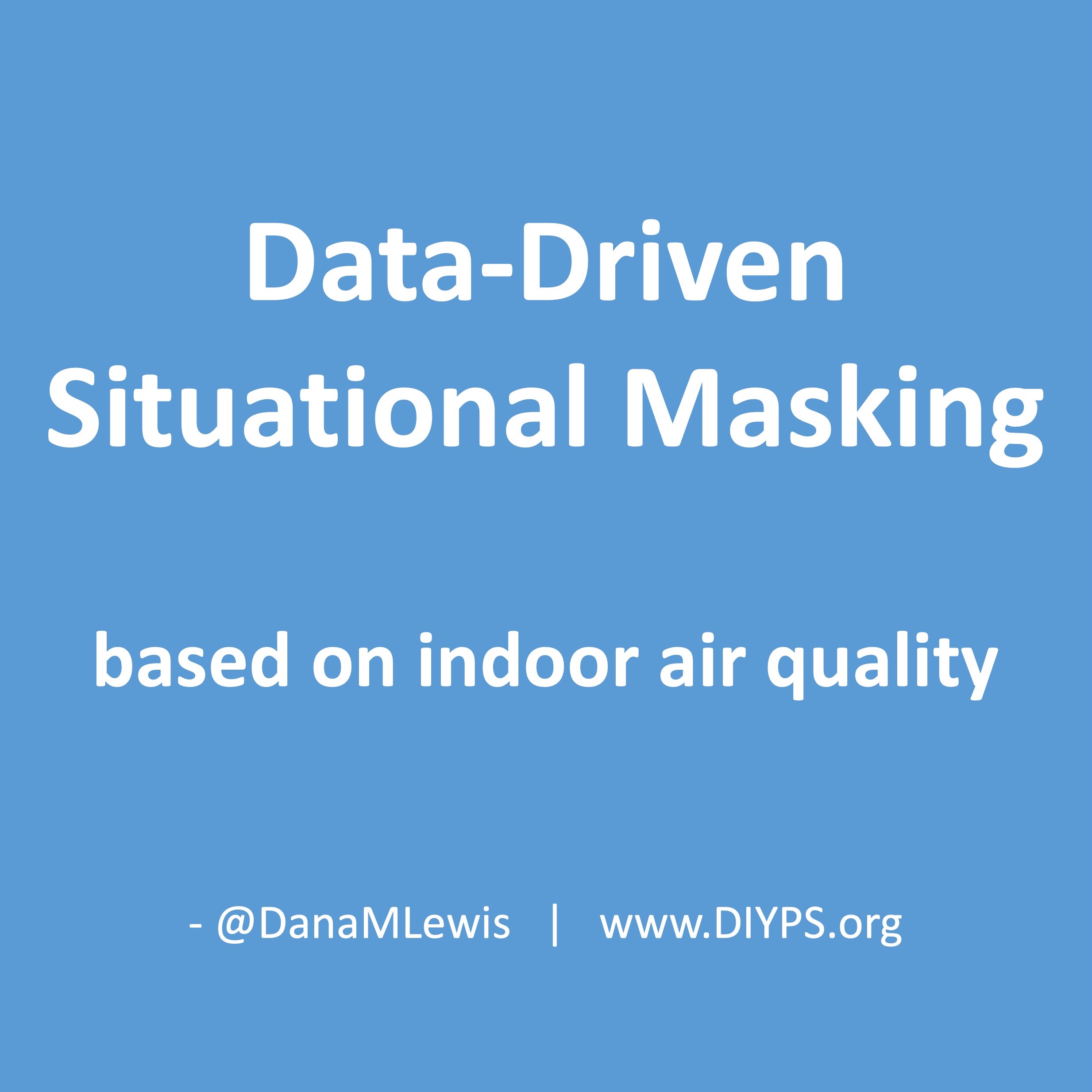
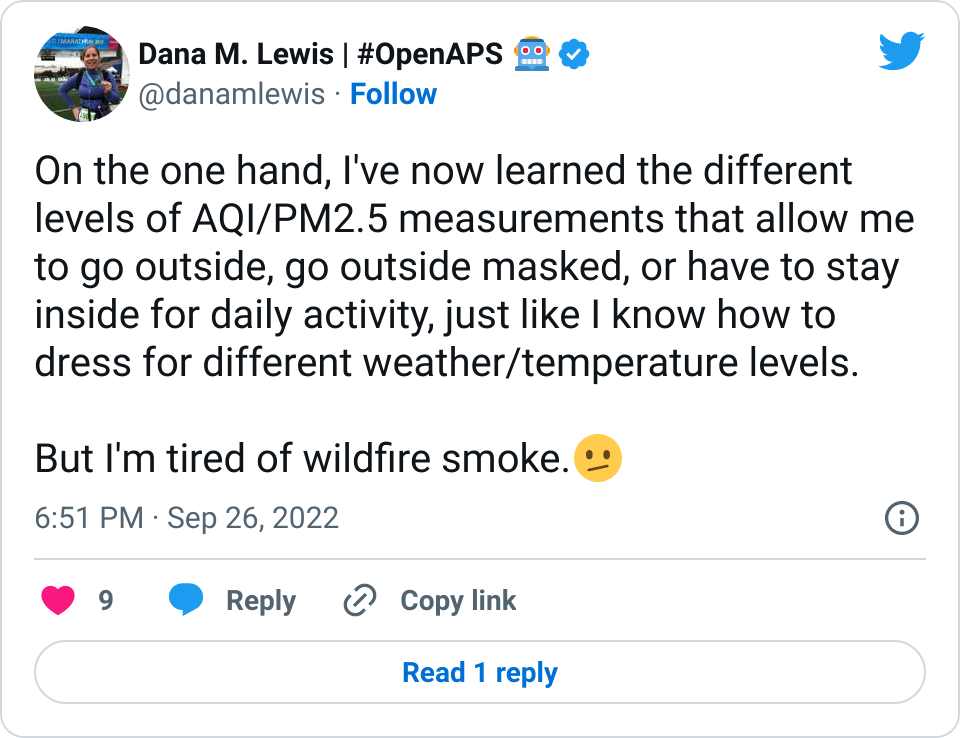
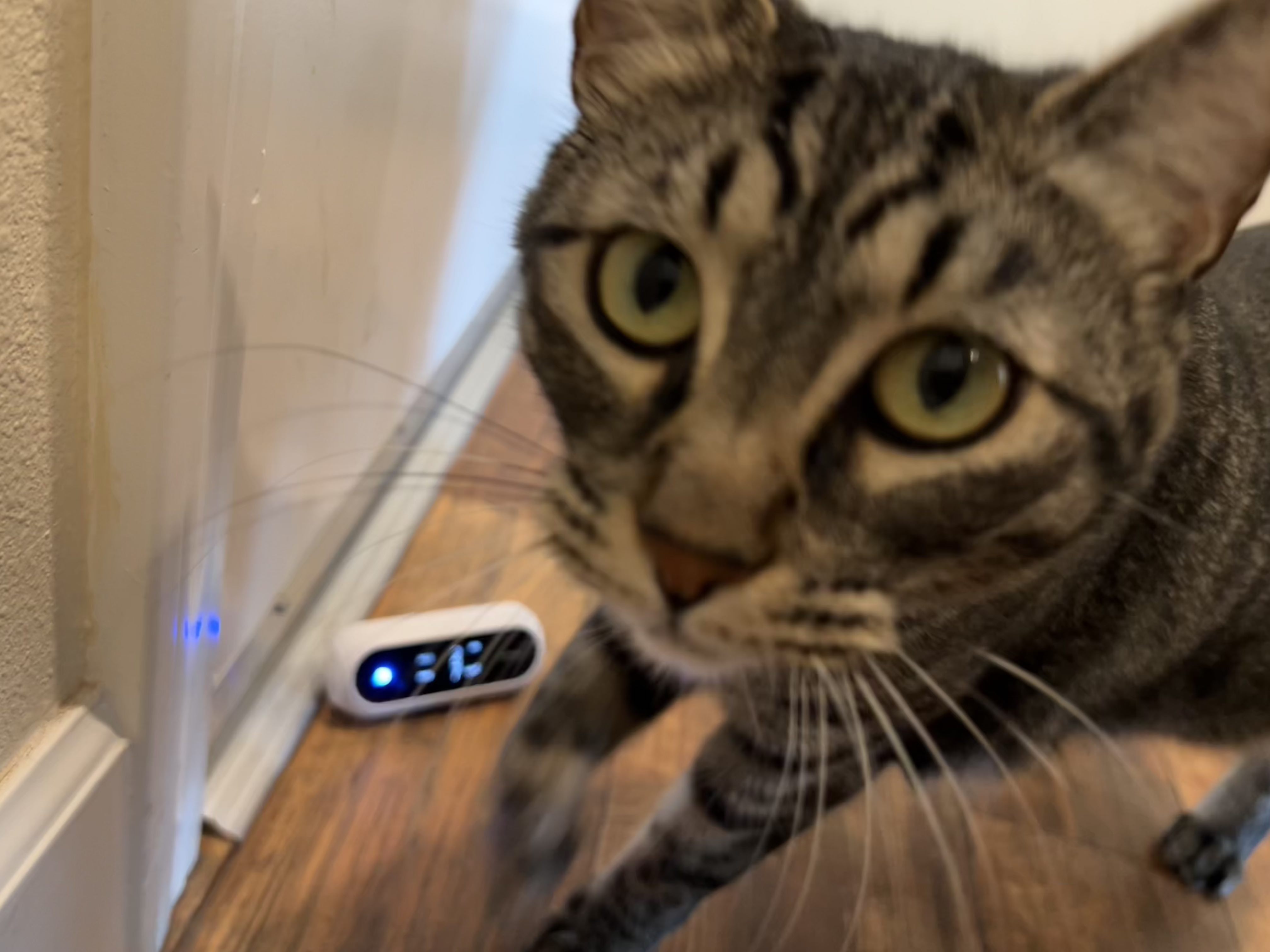
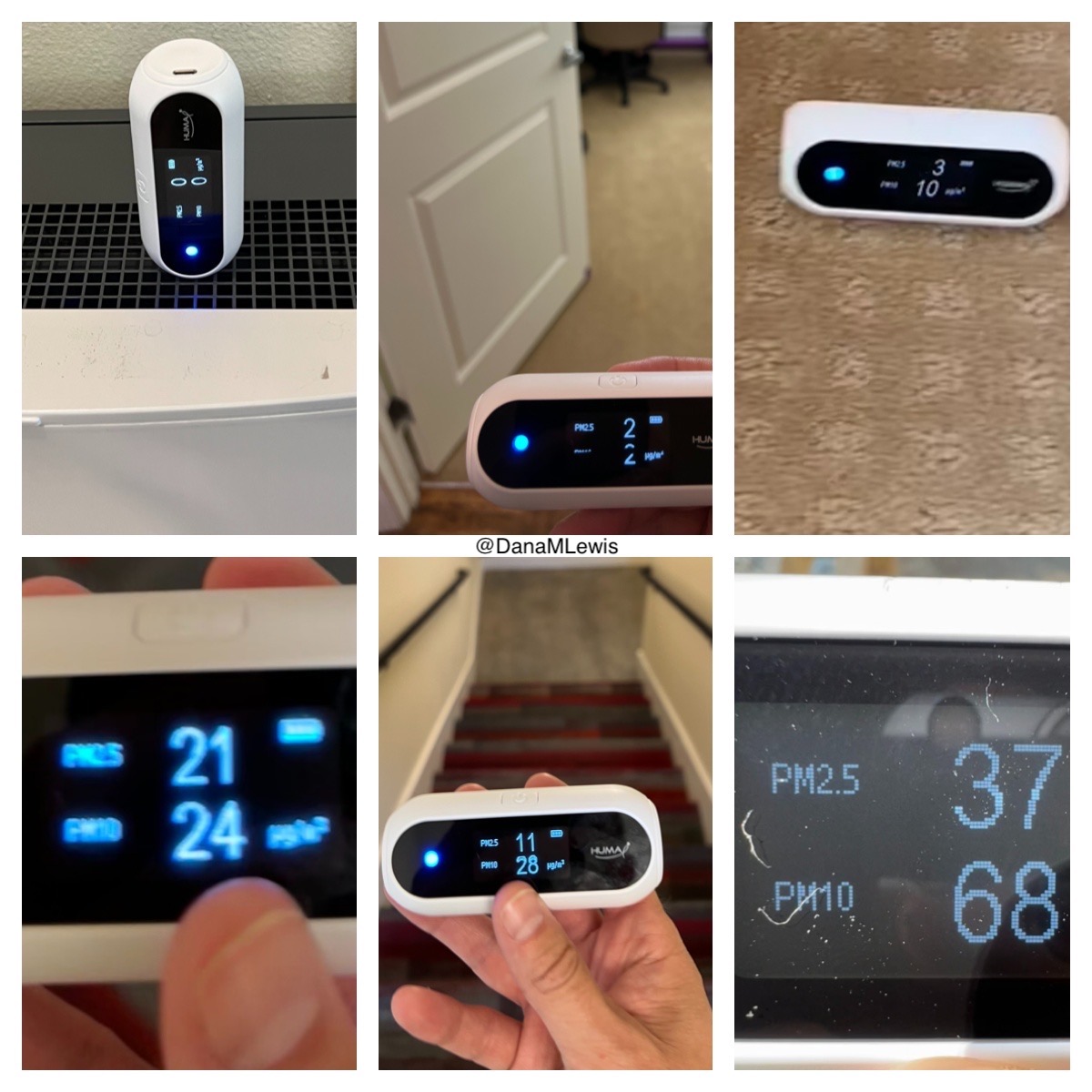
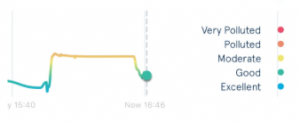
Recent Comments